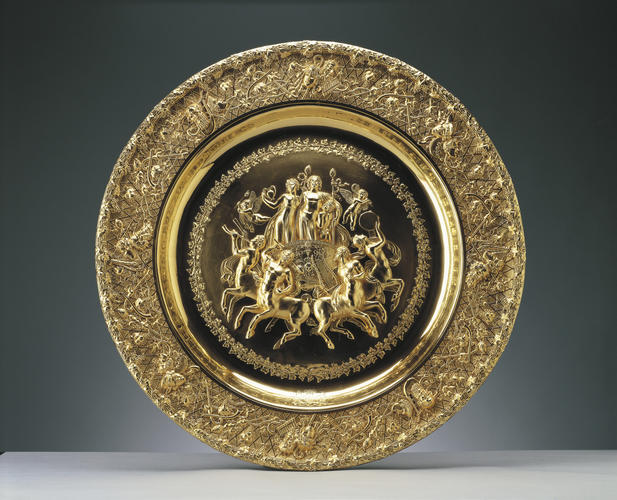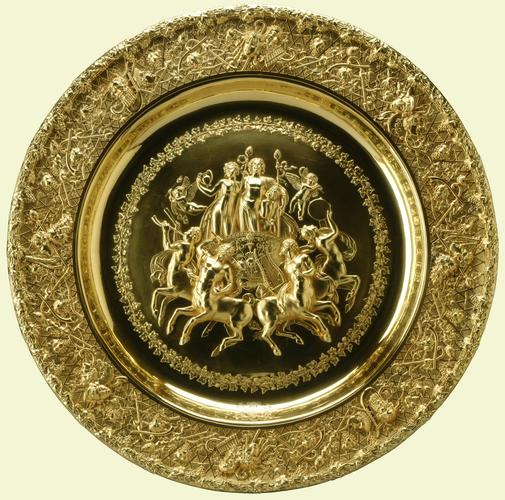-
1 of 253523 objects
Dish hallmark 1814/15
Silver gilt | 79.0 x 79.5 x 7.5 cm (whole object) | RCIN 51654
-
A large silver-gilt sideboard dish with a relief of the Triumph of Bacchus and Ariadne, who stand in a chariot, surrounded by celebrating centaurs, within a wreath of ivy leaves; the border is chased with Bacchic masks, trophies and fruiting vines on a trellis ground; fruiting vine rim.
The design of this dish was the work of the painter Thomas Stothard, friend of John Flaxman. He was influenced by Flaxman's work on the Shield of Achilles, which was in its early stages, and the two artists discussed the designs together. The composition is derived from an antique Roman cameo discovered in the Via Aurelia in 1661. This was engraved by F. Buonarotti in 1698 and included in Bernard de Montfaucon's 'L’Antiquité expliquée' of 1719. In 1798 the cameo was seized from the Vatican by Napoleon and taken to the Louvre, where it was probaby seen by Flaxman.
A pair of dishes in the Al-Tajir collection has the same central composition but slightly different borders. These bear the earlier hallmark of 1813/14 and appear to the first in a series of Bacchus dishes made in the workshop of Paul Storr for Rundells. Another dish of identical pattern was supplied to the Earl of Ailesbury in 1817/8 (Audrey Love Collection).
The success of Stothard's design led to his commission to design the Wellington Shield, presented to the first Duke of Wellington by the Merchants and Bankers of the City of London in 1822 and still in the Wellington Collection at Apsley House.Provenance
The dish was billed to George IV when Prince Regent in 1815 at a cost of £616 5s 7d. It was delivered to Carlton House on 5th April of that year (TNA LC9/351, f.31).
-
Creator(s)
(goldsmith)(designer)(manufacturer)Acquirer(s)
-
Medium and techniques
Silver gilt
Measurements
79.0 x 79.5 x 7.5 cm (whole object)
11637.4 g (Weight) (whole object)

